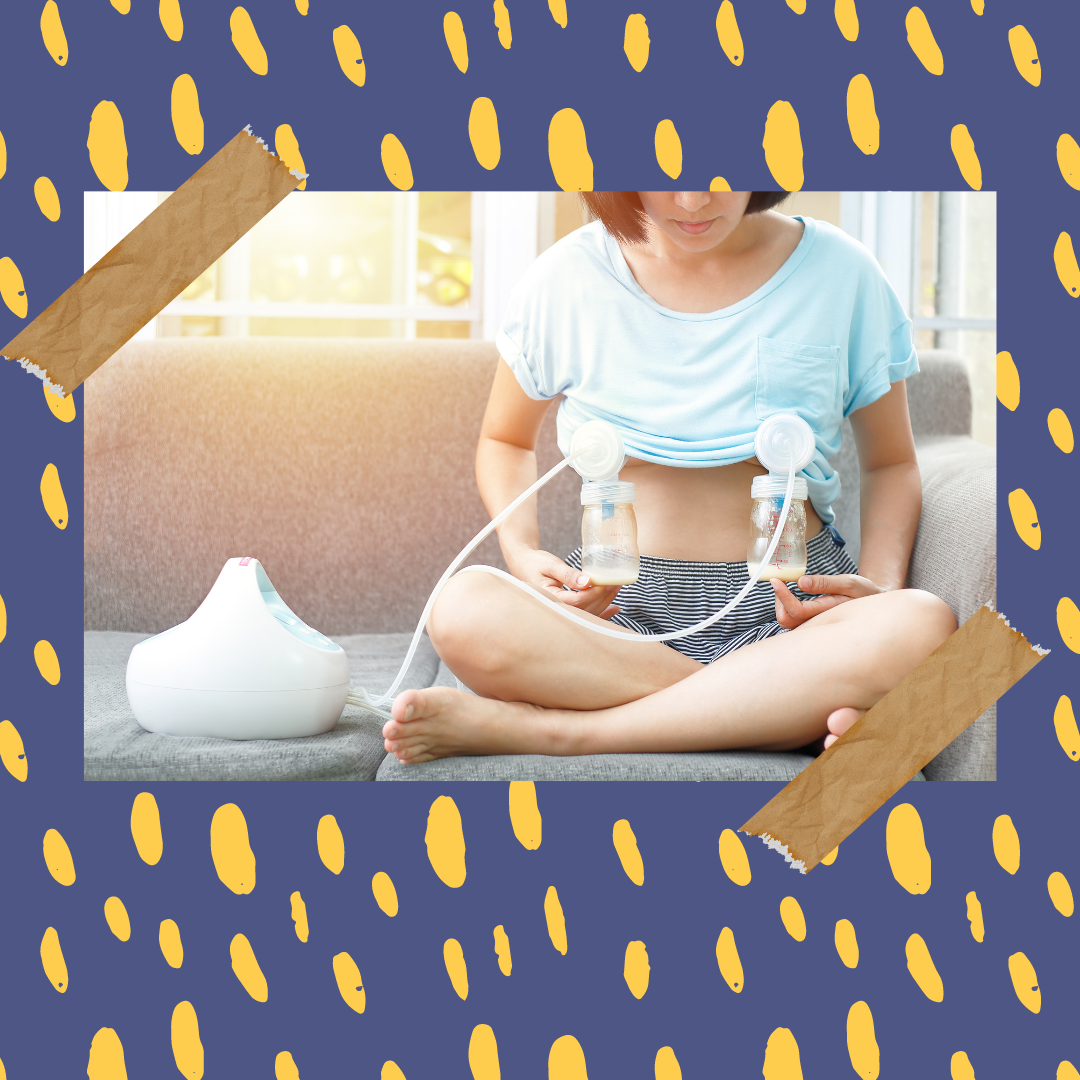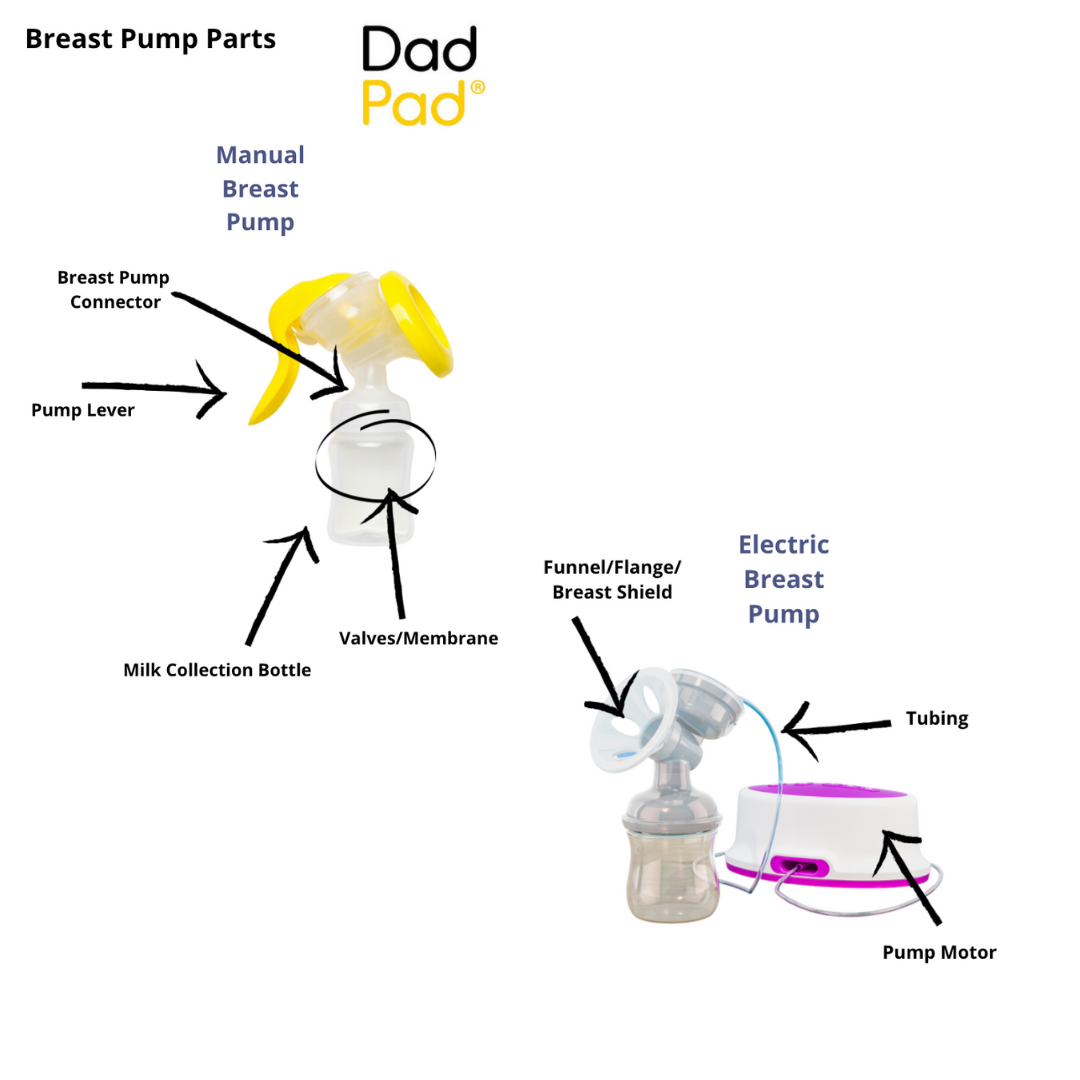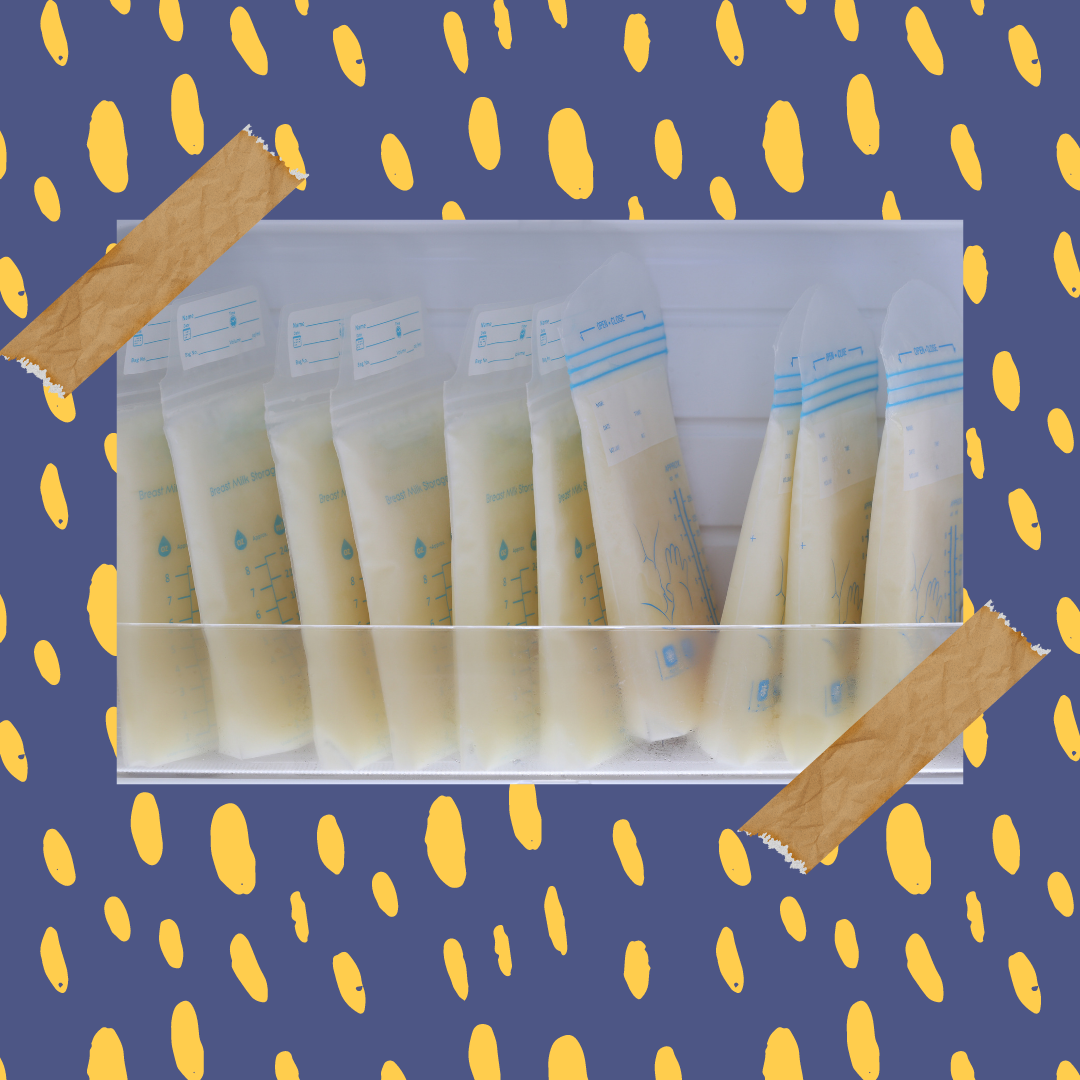
Ask DadPad, Parenting Advice
Ask DadPad: What is breast pumping all about?!
Posted on 28th January 2022
As yesterday (Thursday 27th January) was World Breast Pumping Day, we decided to make this week’s blog post all about that particular topic: breast pumping! Due to her expertise and experience in relation to all things breastfeeding, we once again turned to DadPad team member Georgie to write this one. Her aim was to provide dads-to-be and new dads with a dad-friendly explanation of breast pumping and expressing: what it is, why mum might choose to do it, how it’s done, what kit you might need to get, and – importantly – how to ensure that the kit stays clean and safe for baby. We think she’s done a great job but – as always – we’d love to know what you think of it, so do please pop to one of our social media accounts (we’re @dadpaduk on Twitter, Instagram and Facebook) if you have a comment…
What is expressing?
Expressing, also referred to as pumping, is another way of removing human milk from the breast. Sometimes there is a medical reason why your partner may need to express her milk for your baby; however, some parents just find it reassuring (and useful) to be able to have extra human milk available to them. Feeding your baby your partner’s expressed milk means that they will continue to receive milk that has been tailor-made specifically for them.
When to express?
It’s up your partner to decide if she would like to express her milk and it is best to wait until her milk supply is fully established (approximately six weeks post-birth) before starting. Sometimes it isn’t possible to wait that long to start expressing and, if this is the case for your partner, then she should receive support and guidance on expressing from your local Infant Feeding Team, Midwife, Neonatal Nurse or Health Visitor.
Some of the most common reasons why your partner might express her milk are if:
- she has been recommended to express her colostrum before baby arrives;
- your baby has been born prematurely, is unwell or needs some extra care after being born;
- your baby can’t latch onto – or stay attached to – the breast to feed;
- your partner is feeling uncomfortably full of milk;
- your partner is trying to boost her milk supply;
- your partner wants to bottle feed, but doesn’t want to use formula milk or your baby has sensitive digestion;
- your partner needs to spend time away from baby (e.g. returning to work or study); and/or
- you are starting to introduce solids and you want to mix your baby’s food with human milk, instead of a dairy milk (nut and oat milks aren’t recommended for children under one year).

How is human milk expressed?
There are several ways to express human milk and the one your partner chooses will depend on her needs and what works best for her. Sometimes she may need to try a few different methods of expressing before deciding.
Here is a summary of the pros and cons of each method:
Hand expression is really useful to know how to do in the early days of feeding, or in case of an emergency, and is the only effective way to express colostrum (baby’s first milk). It is also useful for those mums who need human touch to get their milk flowing or who are sensitive to the suction of a pump. Hand expression can be done anywhere, providing mum knows the massage technique and has a clean receptacle to catch the milk in. It’s not the fastest way of expressing milk, but it is a reliable and gentle method.
Silicone pumps are a more recent invention and consist of a small device that looks like a hand grenade which uses suction to attach to the breast. Silicone pumps are great for: catching leaking milk from the side that isn’t being fed from; gently expressing a bit of milk from a full breast for comfort; or catching precious colostrum (baby’s first milk after birth). Silicone pumps don’t create a strong enough suction or pumping rhythm to collect a whole human milk feed, as the fattier part of mature human milk is only drawn down and out using stronger suction and massage of the breast tissue. It is, however, an affordable, easy and hands-free way of collecting human milk that would otherwise go to waste.
A manual pump is a hand-operated pump that expresses human milk using suction. The breast tissue is placed into the funnel of the pump and the suction-and-rhythm of the pump is created by squeezing the lever attached to the device. The expressed milk is captured in a bottle or milk storage bag which is attached to the bottom of pump before expressing begins. Manual pumps are useful to people who prefer to control the speed or intensity of the suction by hand or who need to express milk where they don’t have reliable access to a power source. Manual pumps are generally easy to transport around and are more affordable than electric pumps.
An electric pump needs plugging into the mains electricity and/or has an in-built rechargeable battery. Just like the manual pump, the breast tissue is placed into the funnel of the pump and the suction-and-rhythm is created by an electric motor. The expressed milk is captured in a bottle or milk storage bag which is attached to the bottom of pump before expressing begins. The intensity and rhythm of the suction can be adjusted using either buttons or a dial on the console of the device, and some pumps can even be programmed to remember the user’s personal expressing routine. An electric pump is very useful for those people who are expressing full-time or who need to be able to pump quickly (e.g. at work, on an expressing break). Electric pumps now come in all shapes and sizes but are usually bulkier to transport around and need plugging in or regular charging. Although things have improved in recent years, noise is still a factor to be aware of when using an electric pump: hospital-grade pumps can be especially audible! The price of an electric pump depends upon the brand and model chosen, but they are generally more expensive than a manual pump.

The basic parts of a pump and how to care for them
If you’ve been feeling that mum is shouldering all the hard work relating to feeding (although of course there are still a whole range of other useful things you can be doing, to both support her with breastfeeding and to help build your own bond with your baby), now is your chance to get involved and help out in a really useful, practical way!
Just like a bottle, a pump will need taking apart and cleaning thoroughly between expression sessions*. Each brand of pump may have slightly different looking parts, but they all work in a similar way to collect expressed milk. Make sure you read your chosen pump brand’s instructions carefully, as some parts of the pump may not be suitable to be boiled or sterilised and may have limited uses before needing to be replaced. As a rule of thumb, though, anything that comes in direct contact with human milk should be washed in hot soapy water, rinsed well and sterilised after each expression session.
*If your partner is expressing in quick succession (mimicking a cluster feed, to help build their milk supply) you can place the funnel, connector and bottle section of the pump in a zip-lock bag and pop into the fridge during the breaks between pumping. At the end of the cluster pump session, all the milk collected will need storing and the parts will need cleaning in the same way as you would at the end of a normal expression session.
Funnel/Flange/Breast shield: This is the cone-shaped section on the top or side of the pump, where the breast is inserted. Some funnels are made of hard plastic, but others have silicone inserts for extra comfort of the user. Usually, a pump will come with a standard-sized funnel, but you can also buy smaller or larger funnels if required. A funnel that is too big or too small can cause damage to the breast tissue or nipples. This part of the pump needs washing and sterilising after every pumping session.
Breast Pump Connector: This is the section of the pump that connects the funnel to the storage bottle or bag. Depending on the pump being used, the connector will also have a lever or tubing attached. The connector collects the milk and draws it down through little holes and a valve, into the storage bottle/bag. This part of the pump needs washing and sterilising after every pumping session.
Valves/Membranes: Each brand of pump has its own design, but all should have some sort of valve or membrane that the milk needs to pass through to get to the storage bottle/bag. The valve/membrane is there to prevent any milk from passing back up through the connector, which could cause contamination of the pump. Valves and membranes have limited life spans, and your pump should come with at least one replacement, but spares can easily be purchased from shops that sell pumps, or online. This part of the pump needs washing and sterilising after every pumping session.
Tubing: Some electric pumps have tubing to connect the motor to the pump connector. They are usually clear in colour and are very flexible for ease of use. The tubing needs to be checked regularly for splits or discolouration and replacement tubing will be available to purchase as a spare part from the manufacturer. This part of the pump doesn’t usually need washing but cleaning might be needed if milk leaks into it or you notice something inside the tubing; however, you ideally don’t want this because the milk/moisture in the tubing can get to the pump motor. The best way to clean the tubing is to wash in hot soapy water, rinse thoroughly and hang to let it dry completely – inside and out – before using again.
Back-flow protectors: Some electric pumps have back-flow protectors in between the tubing and the pump connector. These prevent any milk or moisture getting into the tubing and making its way to the motor. Not all brands have back-flow protectors, but you can buy them separately and add them to your pump if you want to. They are usually made from clear plastic so you can see the inside of the valve. You don’t usually need to wash back-flow protectors unless you notice moisture or milk inside them, but if you do you can easily separate them from the pump, dismantle, clean and dry them out.
Pump lever: Manual pumps come with a lever, which is usually attached to the pump connector with a hinge. You should be able to detach the lever, so the parts of the pump that come in direct contact with the expressed milk can be washed, rinsed and sterilised. You can wash the lever in warm soapy water, rinse and dry, but it is best not to sterilise it in case the shape of it changes in the heat of the steriliser.
Pump motor: If you have an electric pump, then you’ll either have a motor built into the pump or a separate device which you connect to the pump with tubing. The pump motor is usually the part you plug into the mains or charge up if it has an in-built battery. The pump motor needs to be looked after carefully, as it can become contaminated or break if it gets moisture or milk inside or if it is dropped on the floor. Although you may want to wipe down the outside of the motor occasionally with an antibacterial wipe, you shouldn’t clean it with a wet cloth, and it can’t be submerged in water. If the electric motor stops working or isn’t working well, it will need sending back to the manufacturer for repair or replacement.
Milk collection bottles/bags: All pumps come with at least one branded bottle which screws on to the bottom of the pump connector to collect the expressed milk in. You may find other bottles also fit, but it is a case of trial and error to find which bottles are compatible. Milk storage bags are a useful alternative to bottles for people who need to store a larger collection of expressed milk as, once sealed, they can be laid flat. Watch out for milk storage bags that come with sticky tabs to attach them to the pump connector – there is nothing worse than having a milk storage bag drop off the pump mid expression! This part of the pump needs washing and sterilising after every pumping session (or disposing of, if it’s a single-use storage bag).
* TOP TIP *
Microwave sterilising bags can be particularly useful for cleaning pump parts, as they can easily be used out and about and are also the perfect size for sterilised pump parts to be kept in until they are needed again.

Breastmilk storage
After your partner has expressed their milk, it will need to be labelled and stored correctly. If the plan is to use the milk within a few days of being expressed, then it can be kept in the fridge. However, if you need to store it for longer than three days, then it is best to freeze it. Beware that storing human milk can take up a lot of space in your fridge or freezer and it needs to be kept separate from your household food for hygiene purposes. You can find a detailed table, summarising the key guidelines on milk storage in relation to healthy, full-term babies via the La Leche League International ‘Storing Human Milk’ webpage.
Labelling expressed milk is important, so that the milk can be stored safely and so that both parents can keep track of important information about the milk.
What to include on a label for stored expressed milk:
- Date of expression:
- Time of expression:
- Full/Half/Cluster expression:
- Type of pump used (if you have more than one):
- Anything else you might want to know about the milk: Illness, Medication, Diet*
*Whilst illness, medication and diet aren’t usually reasons not to use expressed human milk, over time you and baby’s mum may notice that your baby takes some stored milk better than others. For example, if you discover your baby is sensitive or reacting to something in mum’s diet, the milk labels will help when sorting through the stored milk in order to remove anything which is no longer suitable to feed your baby with.
* TOP TIP *
If your partner is building a stash of milk in your freezer, you can maximise your storage space by using milk storage bags. Put them lying down flat to freeze, so they can be stacked or ordered in rows.

References and further reading:
NHS ‘Expressing and storing breast milk’ webpage
NHS Start4Life ‘Expressing your breast milk’ webpage
La Leche League International:
La Leche League GB ‘Storing your milk’ webpage
The Breastfeeding Network ‘Expressing and Storing Breastmilk’ webpage

